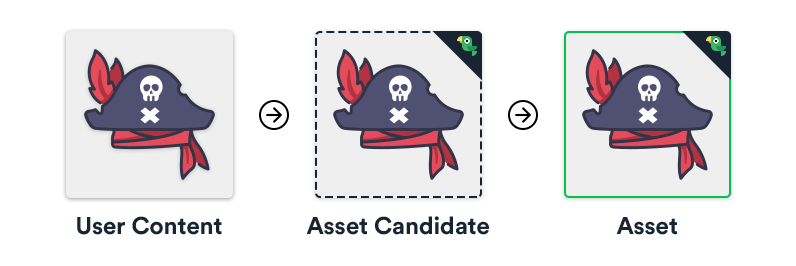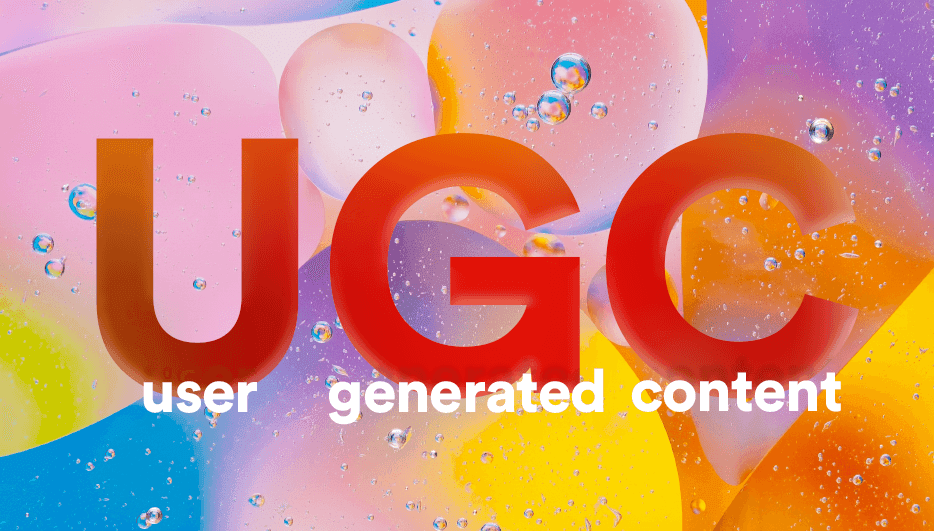- Intro
- Why is UGC so popular?
- How can I use UGC in my game?
- Some rules for UGC
- How do I use LootLocker for UGC?
UGC stands for user-generated content and refers to any content that’s created by players, rather than by a game’s dev. So that’s things like custom maps, skins or even entire mods that change the core gameplay. GIFs, fan art, memes, and the like are also considered UGC. Games with built-in UGC or that are designed to support mods have become more and more popular over the last few years, with some substantially extending games’ lifecycles (and even bringing a new audience to the game well after its initial release). If you’re interested in adding UGC to your game, but not sure where to start, this article’s for you.
Why is UGC so popular?
Simply because it lets players create and share unique content (both free and paid), which enhances or extends the gaming experience for themselves and others. Depending on the in-game tools they can create almost any content they want – as long as it isn’t offensive – which is a great way to channel their creativity. These tools can also allow players to remix other player’s UGC, which can create a flywheel of content.
Implementing UGC is good for you as a developer too. It keeps people coming back to your game long after its initial release – because there are always new things to play, create, and share. It’s also a great way to unlock virality when players share what they’ve created on Twitter, TikTok, or Discord. That’s why UGC-based games and platforms are now some of the most successful in the world.
How can I use UGC in my game?
To inspire you, we’ve taken an in-depth look at some games that are successfully using UGC to stay fresh and engaging – starting with simple customizable characters, right up to platforms that let players build and share their own complex games. (Before we start, it’s worth noting that we’ve focused on games that offer UGC tools in-game, rather than ones with mods where creators upload custom files into the game from external software.)
UGC to create art
Townscaper

Created by solo developer Oskar Stälberg, Townscaper lets you quickly and easily create pretty towns that pop up right from the glassy water. The game has no inherent objective but makes it easy to simply paint the low poly, minimalist town of your dream and create something worth sharing. Townscaper has no built-in sharing system for player creations, but given scenes are static, most players have resorted to simply sharing screenshots.
SuchArt

Subtitled as the "Genius Artist Simulator", SuchArt is a realistic, physics-driven art simulator that provides players with an art studio and all the tools needed to create whatever they want, attempt to sell art on a marketplace, or fulfill client orders. With an unrivaled depth of tools at your fingertips, your imagination is the only limiting factor.
UGC to customize your world
Hokko Life

Players create and customize their town with the likes of furniture, decorations, and clothing… pretty much anything they can imagine and create with the built-in editor. In Hokko Life creations are uploaded to in-game libraries, and they can then view each other’s by entering an eight-digit cross-platform creator code. (Oh, and all that functionality is actually provided by LootLocker.)
Miitopia

Miitopia ia a role-playing game that allows players to create and customize their own Mii characters, which they then use as their player character or as party members in the game. There are lots of customization options, including facial features, hair styles, and clothing. They can also share Mii characters using QR codes and other online sharing features, including using other players’ Miis in their own games.
UGC to change gameplay
Besiege

A physics-based puzzle game that allows players to build and control their own siege weapons, vehicles, and other contraptions to complete various objectives. They create and share new levels and other content, including remixing existing levels and machines to keep the game fresh. Thanks to UGC, Besiege has built an active community.
Scrap Mechanic

Scrap Mechanic is a sandbox-style engineering game where players build their own machines, levels, and other content in a vast open world. Then others download, play and rate it. This has spawned a particularly creative community, building everything from simple machines to complex robots, and even entire cities.
UGC to change worlds or levels
Super Mario Maker

In Super Mario Maker players create and share custom levels using the assets and mechanics of other Super Mario games. The game relies on UGC for a virtually endless supply of levels, including terrain tiles, enemies, power-ups, decorative objects, checkpoints, sound effects, and music. Players can leave comments on levels they’ve played, which has created a thriving online community.
Trackmania

A racing game that uses UGC to give players an almost infinite number of tracks. They design their own tracks, including terrain tiles, road pieces, obstacles, and decorative objects, and race and comment on those created by others. Trackmania also holds regular competitions and events featuring the best tracks created by players, which has led to another close-knit gaming community.
Line Rider

Line Rider is a classic web-based game where players draw a track using a simple tool, then ride a sled along it. The game uses UGC to give players an almost infinite amount of tracks. They can add obstacles, ramps, and other features to make tracks more challenging, then share them with others through an online community. The game also has leaderboards for the most popular and highly rated tracks.
UGC to change game logic
Roblox

One of the most popular online gaming platforms in the world, especially among young people. Players create and share their own games (over 40 million so far), items, clothing, and other content. It also has a marketplace where they buy and sell their own content to earn Robux, Roblox’s virtual currency. A moderation system makes sure all UGC is safe.
LittleBigPlanet

LittleBigPlanet is a puzzle platform video game series with a strong emphasis on UGC that’s helped it become a long-lasting franchise with a dedicated fan base. Players use the game’s level editor and creation tools to design and build their own levels including platforms, obstacles, and enemies. They can also customize their character’s appearance, abilities, and animations. Then they share content online where others download and rate it. This has created a close community of players, while also keeping the game fresh.
Dreams

Players use Dreams’ creation tools to design and build their own games, including gameplay mechanics, levels, characters, and other assets. They can also create music, animation, and even interactive experiences like virtual reality, art installations, and short films. They share it using the game’s online community features, which has built a supportive community of creators and players.
VRChat

VR Chat is a virtual reality social platform where users create, share, and explore virtual worlds and experiences using 3D modeling software or in-game tools, as well as the Unity game engine. They then upload these and share them with other users. People can also communicate in real-time, which has created a virtual social space with users around the world interacting and connecting.
Unreal Engine for Fortnite

You didn’t think we’d forget adding Fortnite to this list did you? After Roblox, Fortnite is the other big UGC platform. In addition to allowing players to create their own game modes just this year Epic announced Unreal Engine for Fortnite which unlocks (nearly) the entire Unreal 5 editor as a tool to create completely custom game modes with new logic, assets - everything!
Some rules for UGC
Hopefully you’re now chockful of ideas about how UGC could improve your game. Before you get started though, let’s have a look at some guidelines you’ll want to follow.
-
Keep it simple: Make sure the tools you provide to create UGC are simple – whether players are just changing the color of a character’s hair or building a thriving metropolis from the ground up. They shouldn’t have to learn how to code to add their own content to your game (though sometimes they do need to do that).
-
Watch out for IP issues: Games that use UGC often get sued by other studios for infringing their intellectual property. It’s impossible to completely stop that, but one of the ways to discourage it is by letting players report content that might be infringing on other IPs.
-
Put together clear guidelines for people creating UGC: Help users understand what you expect of them and what types of content you allow in your game. Then check regularly to make sure your creators are following these. This will also help make sure no-one’s infringing that all-important IP, and also that any UGC doesn’t negatively impact the performance of your game.
-
Build your community: Lots of the games we mention above have created huge communities based around UGC. Take some time to cultivate yours, for example by giving players a way to share their creations on social media and run themed contests. You might also want to create some sort of reward or recognition incentive as well.
-
Moderate content regularly: Make sure it follows your rules and community standards. You might want to review submissions before they’re published, and allow community members to flag any content that’s offensive, or violates your rules. This will help everyone, including you, stay safe.
-
Make it easy to share: Providing the in-game tools for players to build things is the first step, but you’ll also want to make sure theycan easily share their creations with other players. This means building a creator code system or in-game libraries and stores where players can easily find and use content.
How do I use LootLocker for UGC?
Traditionally UGC has been out of reach for many developers as it means setting up and maintaining complicated databases and systems for sharing and downloading other player's content. You also need special tools for moderating and managing content, as well as reporting content that’s offensive or infringing IP. The good news is that LootLocker makes UGC simple.

We have lots of features and tools available for managing it, including file storage, version control, and metadata management. You can moderate and curate content that players upload to make sure it’s appropriate and follows your game’s guidelines. Players can report content they don’t feel fits with the game. And finally, you can test and iterate your UGC features, and collect feedback from players to improve the UGC experience in your game. All cross-platform.
Find out more about how LootLocker makes UGC accessible to everyone.
Add UGC to your game today
Getting started on your UGC journey couldn't be easier. Here's all you need know:
- Create a free LootLocker account
- Create a New Game in your LootLocker organization through our web console
- Download, install and configure our Unity SDK or Unreal SDK using the following guides:
- Authenticate your first player using our Guest Login, Platform Login, or White Label Login methods
- Implement UGC by creating, updating and completing Asset Candidates from within the game with the following API calls
Finally, make sure to let us know how you get on via Twitter or Discord. We love seeing all the different types of games our community build. Good luck!
